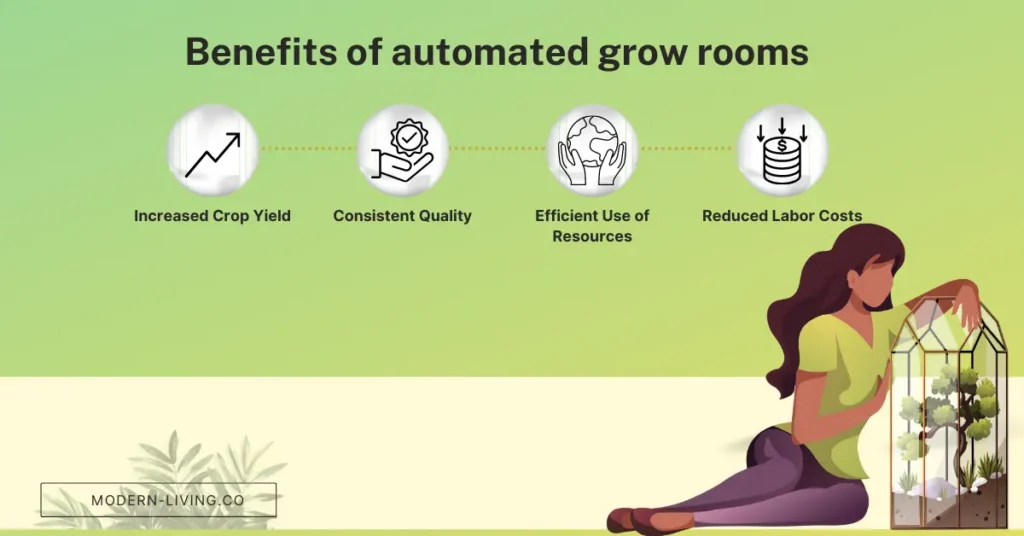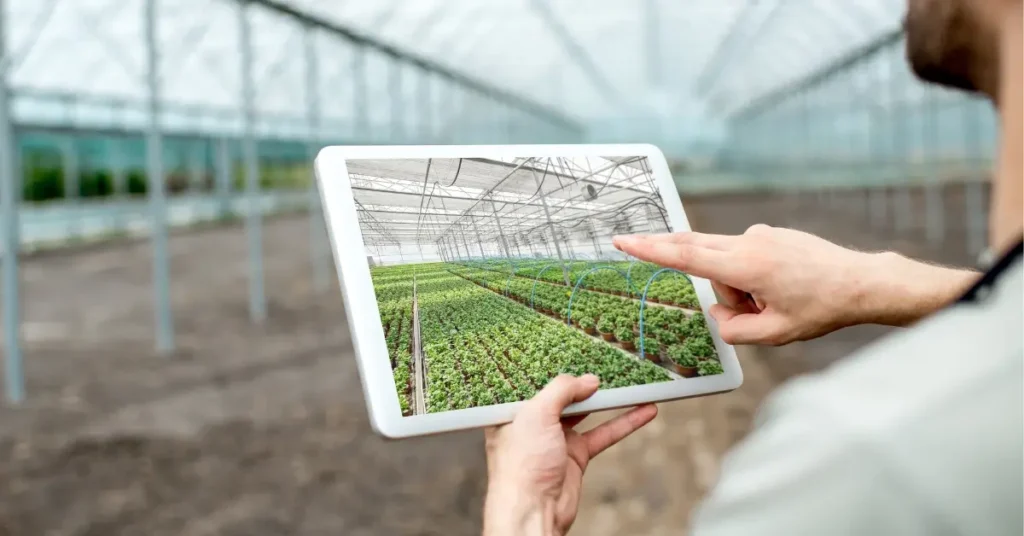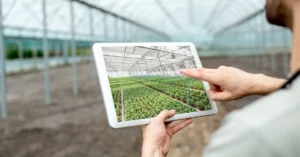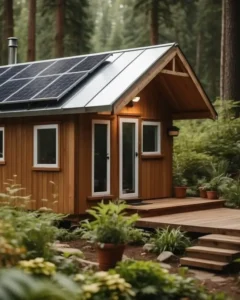An automated grow room is a system that uses software and hardware to control and monitor various aspects of the growing environment. From grow lights and irrigation systems to temperature and humidity controls, everything is centralized and programmed to respond to environmental changes automatically. This means that you can set specific feeding and climate parameters and let the system take care of the rest.
Automated grow rooms are perfect for both commercial growers and hobbyists who want to take their plant-growing game to the next level. With an automated system, you can achieve consistent and optimal growing conditions, which can lead to healthier plants, higher yields, and better quality produce. Plus, it saves you time and effort, allowing you to focus on other aspects of your plant-growing journey.
Key Components of an Automated Grow Room
As a grower, I understand the importance of having an automated grow room. It not only saves time but also ensures that plants receive the right amount of light, water, and nutrients. In this section, I will discuss the key components of an automated grow room that every grower should consider.
Lighting System
The lighting system is one of the most important components of an automated grow room. It is responsible for providing the right amount of light to the plants. A good lighting system should be energy-efficient, adjustable, and have a long lifespan. LED lights are the most popular choice for growers because they are energy-efficient and can be adjusted to mimic natural sunlight.
Irrigation System
An irrigation system delivers water to the plants. It should be designed to deliver the right amount of water to each plant. A good irrigation system should also be able to deliver nutrients to the plants. Drip irrigation systems are the most popular choice for growers because they are easy to install and maintain.
Temperature and Humidity Control
Temperature and humidity control are crucial for the health of plants. An automated grow room should have a system in place to monitor and control the temperature and humidity levels. A good system should be able to adjust the temperature and humidity levels based on the needs of the plants.
Nutrient Delivery System
A nutrient delivery system is responsible for delivering nutrients to the plants. It should be designed to deliver the right amount of nutrients to each plant. A good system should also be able to adjust the nutrient levels based on the needs of the plants. Nutrient delivery systems can be automated using sensors and controllers.
CO2 Enrichment System
A CO2 enrichment system is responsible for maintaining the right amount of CO2 in the grow room. CO2 is essential for plant growth, and an automated CO2 enrichment system can help maintain the right levels of CO2. A good system should be able to adjust the CO2 levels based on the needs of the plants.
Benefits of Using an Automated Grow Room

Here are some of the benefits I’ve experienced since I started using an automated grow room.
Increased Crop Yield
One of the most significant benefits of using an automated grow room is the increased crop yield. By automating the grow room, I can maintain the ideal temperature, humidity, and CO2 levels, which are crucial for the growth and development of my plants. This consistency in the environment has resulted in healthier plants, faster growth rates, and higher yields.
Efficient Use of Resources
Automated grow rooms use resources efficiently. By automating the lighting, irrigation, and ventilation systems, I can ensure that my plants are receiving the optimal amount of light, water, and air. This not only saves me time but also reduces my utility bills and helps me to conserve resources.
Reduced Labor Costs
Maintaining an indoor grow room can be a full-time job. However, with an automated grow room, I can reduce my labor costs significantly. The automated system takes care of the day-to-day tasks, such as watering, lighting, and ventilation. This allows me to focus on other aspects of my business, such as marketing and customer service.
Consistent Quality
Another benefit of using an automated grow room is the consistent quality of my product. The automated system ensures that my plants are receiving the same level of care and attention every day, resulting in consistent quality and potency. This is crucial for building a loyal customer base and growing my business.
In conclusion, using an automated grow room has been a game-changer for me. It has increased my crop yield, helped me to use resources more efficiently, reduced my labor costs, and ensured consistent quality. If you’re an indoor cannabis cultivator, I highly recommend making the switch to an automated grow room.
Setting Up an Automated Grow Room
As a grower, I know that setting up an automated grow room can be a daunting task, especially if you are new to the game. But trust me, it’s worth it. An automated grow room can save you time, energy, and money while increasing the quality and yield of your harvest. In this section, I will guide you through the process of setting up an automated grow room.
Choosing the Right Equipment
The first step in setting up an automated grow room is to choose the right equipment. You will need to consider the size of your grow room, the number of plants you want to grow, and your budget. Here are some essential equipment you will need:
- Grow lights: LED or HPS lights are the most popular options.
- Ventilation system: This includes fans, filters, and ducting.
- Climate control system: This includes temperature and humidity controllers.
- Nutrient delivery system: This includes pumps, reservoirs, and timers.
- Security system: This includes cameras and alarms to protect your investment.
Space Considerations
The next step is to consider the space you have available for your automated grow room. You will need to ensure that the room is well-ventilated, has access to electricity and water, and is free from pests and diseases. You will also need to consider the size of your grow room and the number of plants you want to grow. Here are some space considerations to keep in mind:
- Lighting: You will need to ensure that your grow lights cover the entire grow area.
- Ventilation: You will need to ensure that your ventilation system is powerful enough to exchange the air in the room every few minutes.
- Plant spacing: You will need to ensure that your plants have enough space to grow and receive adequate light.
System Integration
The final step is to integrate all the components of your automated grow room into a cohesive system. This includes setting up your climate control system, nutrient delivery system, and security system. You will also need to ensure that all your equipment is compatible and that you have the necessary wiring and power sources. Here are some tips for system integration:
- Start with a plan: Draw a diagram of your grow room and plan out the placement of your equipment.
- Test your equipment: Before you start growing, test all your equipment to ensure that it is working properly.
- Monitor your system: Use sensors and controllers to monitor your climate, nutrient delivery, and security systems.
Maintaining an Automated Grow Room

As an avid grower, I know firsthand that maintaining an automated grow room is key to a successful harvest. With automation, we can control the environment, feeding, and climate parameters of our grow room with ease. However, just like any other system, it requires regular checks, cleaning, and troubleshooting to ensure it’s running smoothly. In this section, I’ll share some tips on how to maintain an automated grow room.
Regular System Checks
Regular system checks are crucial to ensure that all the sensors and controls are functioning correctly. It’s essential to check the temperature, humidity, CO2 levels, and pH levels of the water and nutrient solution. You can set up alerts to notify you when any of these levels are out of range, and you can take immediate action to correct them.
It’s also important to check the irrigation system, lights, and ventilation fans regularly. Make sure that the timers are working correctly, and the system is delivering the right amount of water and nutrients to your plants. Check the lights to ensure that they’re not damaged or burnt out, and the ventilation fans are working correctly.
Cleaning and Sanitation
Maintaining a clean and sanitized grow room is essential to prevent the growth of harmful bacteria, fungi, and pests. I recommend cleaning the grow room thoroughly between each harvest and using a disinfectant to sanitize the surfaces. You can also use beneficial microbes to prevent harmful pathogens from taking hold in your grow room.
It’s also essential to clean the irrigation system regularly to prevent clogs and blockages. You can use a solution of hydrogen peroxide and water to flush out the system and prevent the growth of harmful bacteria.
Troubleshooting
Despite our best efforts, sometimes things can go wrong in an automated grow room. It’s essential to troubleshoot any issues promptly to prevent them from causing more significant problems. Check the system logs to see if any sensors or controls are malfunctioning, and replace them if necessary.
If you’re experiencing issues with your irrigation system, check for clogs or blockages and flush the system with a solution of hydrogen peroxide and water. If your plants are showing signs of stress, check the pH levels of the water and nutrient solution and adjust them as necessary.
Future of Automated Grow Rooms
As an avid gardener and technology enthusiast, I am excited about the future of automated grow rooms. With the advancements in technology and the increasing need for sustainable and eco-friendly solutions, automated grow rooms are becoming more popular than ever.
Technological Advancements
The future of automated grow rooms is bright, thanks to technological advancements. From sensors that monitor plant growth to automated systems that adjust light, temperature, and humidity, there are many ways to automate your grow room. These advancements not only make it easier to grow plants, but they also improve the quality and yield of your crops.
One of the most exciting technological advancements in automated grow rooms is the use of artificial intelligence (AI). AI can analyze data from sensors and adjust the environment in real-time, ensuring that your plants receive the perfect conditions for growth. This technology can also detect and diagnose problems early, preventing crop loss and reducing waste.
Sustainability and Eco-Friendliness
Another exciting aspect of automated grow rooms is their sustainability and eco-friendliness. With the increasing demand for organic and sustainable produce, automated grow rooms offer a solution that is both environmentally friendly and economically viable.
Automated grow rooms can be designed to use minimal resources, such as water and electricity, and can even incorporate renewable energy sources like solar power. Additionally, by growing plants indoors, you can reduce the need for pesticides and herbicides, making your crops healthier and safer for consumption.
FAQ
How much space do you need for a grow room?
The amount of space needed for a grow room depends on factors such as the number of plants, lighting, and ventilation. Generally, each cannabis plant needs 1-3 square feet of space. Lighting requirements vary, but a typical LED grow light needs 30-40 watts per square inch of growing space.
How much space should be between plant and grow light?
The distance between plants and grow lights depends on the type of light and the stage of plant growth. For low-powered LED lights, a distance of 40-66cm is recommended, while medium-powered LED lights should be 50-75cm away. For higher-powered LED lights, the distance should be at least one meter.
What happens if plants don’t have enough room to grow?
If plants don’t have enough room to grow, they can produce less, become stunted, or develop diseases. Overcrowding can also cause plants to compete for nutrients and light, leading to weaker and less healthy plants.
If you liked this blog article about the topic: Automated Grow Room, don’t forget to leave us a comment down below to tell us about your experience.
Feel free to also check out our other Articles from the category “Home Automation“




